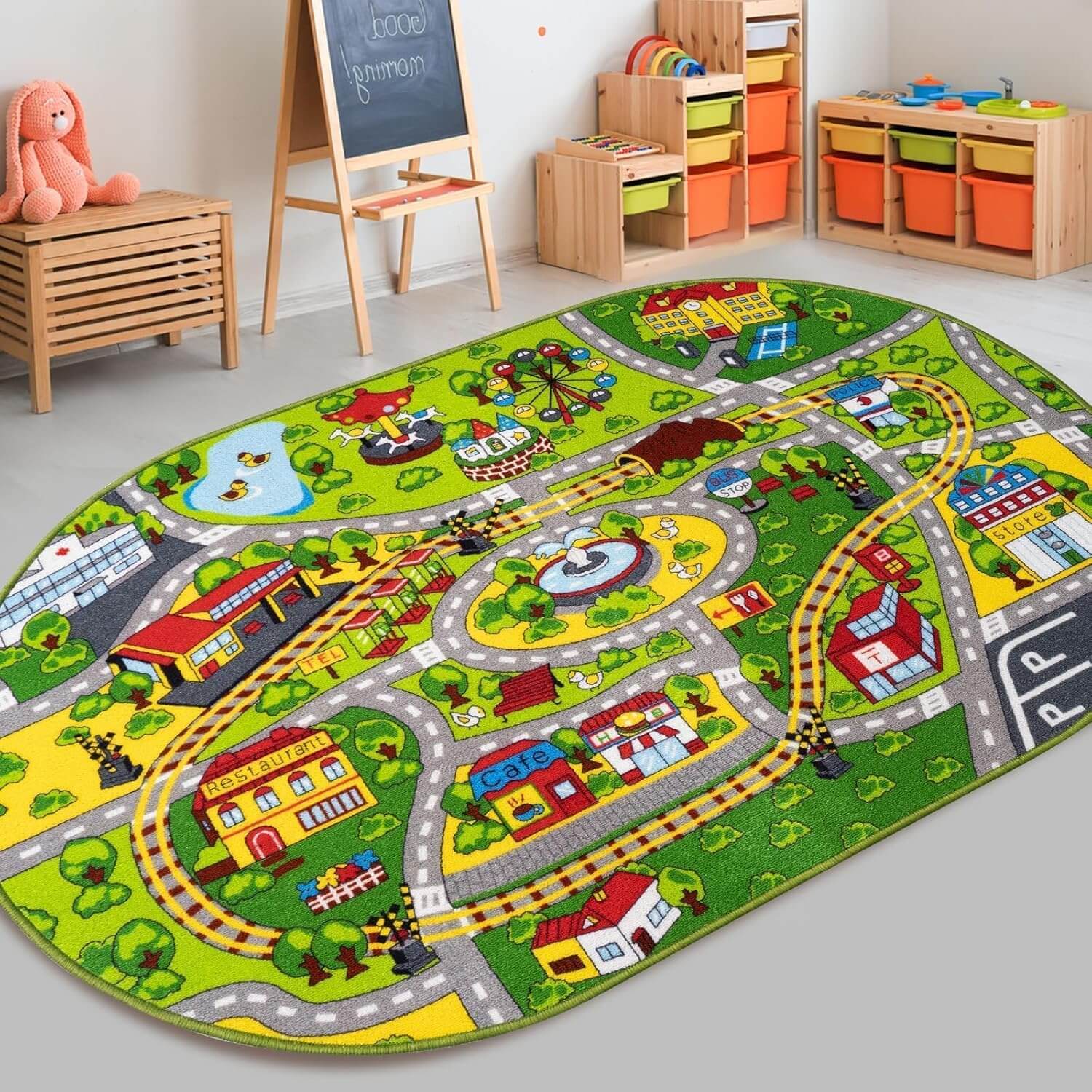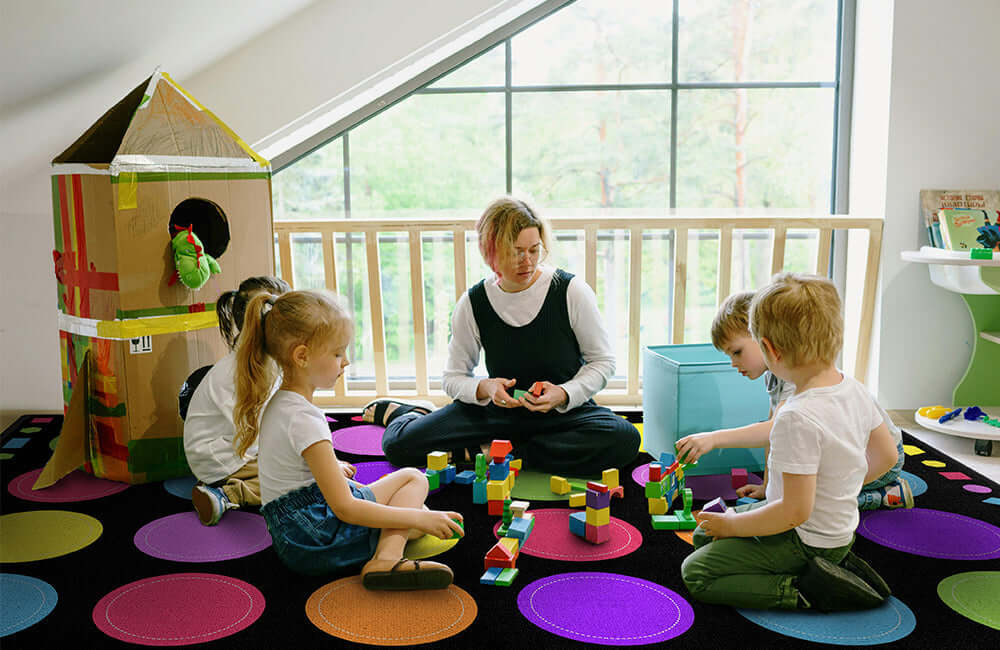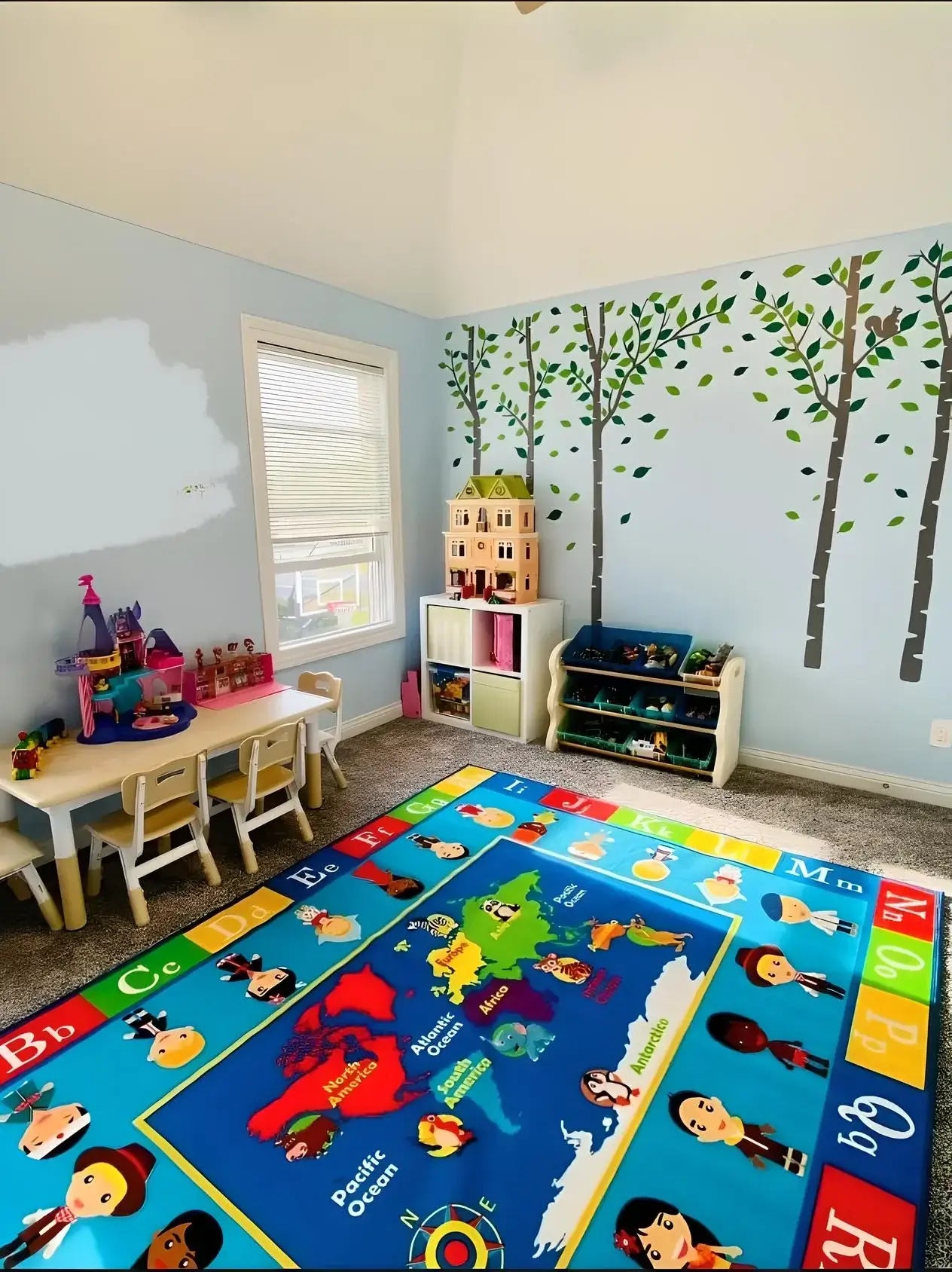Why Classroom Rugs Matter More Than You Think
Modern educators understand that the physical learning environment significantly impacts student engagement and academic performance.
A well-chosen classroom rug serves multiple purposes: it designates specific learning zones, reduces noise levels, provides comfortable seating during group activities, and adds warmth to often sterile institutional spaces.
Research from educational psychology experts suggests that comfortable, well-defined learning spaces help students focus better and participate more actively in classroom discussions.
When children have a designated "rug time" area, they naturally understand it's time to gather, listen, and engage with their peers and teacher.
Essential Features of Quality Educational Rugs
Durability and Safety Standards
The best classroom rugs withstand heavy daily use from dozens of small feet, spilled snacks, and frequent cleaning.
Look for rugs with commercial-grade backing, stain-resistant fibers, and antimicrobial treatments.
Safety features should include slip-resistant backing and low-emission materials that meet indoor air quality standards.
Size Considerations for Different Classroom Layouts
Classroom rugs typically range from 4x6 feet for small reading nooks to 8x12 feet for whole-class gathering areas.
Consider your classroom size, student count, and intended use.
A rug that's too small creates crowding and discomfort, while an oversized rug can overwhelm the space and interfere with traffic flow.
Educational Design Elements
Many modern classroom rugs incorporate learning elements directly into their design.
Alphabet rugs help with letter recognition, number grids support math concepts, and world maps encourage geography discussions.
These educational rugs transform floor time into active learning opportunities.
Popular Types of Classroom Rugs
Circle Time and Gathering Rugs
These rugs typically feature circular designs or clearly marked seating spots to help students understand personal space boundaries during group activities.
Many include visual cues like numbers, letters, or fun characters that make transitions smoother and more engaging.
Subject-Specific Learning Rugs
Mathematics rugs might feature number lines, multiplication tables, or geometric shapes. Reading rugs often showcase alphabets, sight words, or literary themes.
Science-themed rugs can display solar systems, periodic tables, or life cycles, turning the floor into an interactive learning surface.
Calming and Sensory Rugs
For quiet corners and sensory breaks, neutral-toned rugs with soft textures provide comfort for students who need emotional regulation space.
These pastel classroom rugs often feature calming colors and minimal patterns that won't overstimulate sensitive learners.
Maintenance and Longevity Tips
Proper care extends your classroom rug's lifespan significantly.
Weekly vacuuming removes daily dirt and debris, while monthly deep cleaning addresses deeper stains and odors.
Many teachers find success with portable carpet cleaners designed for commercial use.
Establish clear classroom rules about food and drinks near the rug area. Teaching students to remove shoes or use the rug respectfully helps maintain its condition throughout the school year.
Budget-Friendly Options Without Sacrificing Quality
Quality classroom rugs represent a significant investment, but several strategies can help stretch your budget.
Consider washable rugs that eliminate professional cleaning costs, or look for end-of-season sales from educational suppliers.
Some teachers successfully use interlocking foam tiles as affordable, customizable alternatives to traditional rugs.
Creating Learning Zones with Strategic Rug Placement
Position your large classroom rug away from high-traffic areas like the pencil sharpener or classroom door.
Ensure adequate space around the perimeter so students can sit comfortably without blocking walkways.
Good lighting above the rug area is essential for reading activities and detailed work.
Consider having multiple small classroom rugs for different purposes rather than one large rug.
This approach allows for flexible classroom arrangements and targeted learning activities throughout the day.
The Impact on Classroom Management
A designated rug area naturally supports classroom management by providing clear expectations for student behavior and positioning.
Students quickly learn that "rug time" means active listening, raised hands for questions, and respectful interaction with peers.
Many teachers use rug time as a transition tool, helping students shift focus between different subjects or activities.
The physical act of moving to the rug signals a change in expectations and helps students mentally prepare for new learning.
Investing in a quality classroom rug pays dividends in student engagement, learning outcomes, and classroom atmosphere.
Whether you choose an educational design that reinforces curriculum concepts or a simple, comfortable gathering space, the right rug becomes an invaluable teaching tool that serves your classroom community for years to come.
- Classroom Setup Ideas
-
Educational Psychology and Learning Environments - Wikipedia
- Indoor Air Quality in Schools - EPA Educational Resource




Leave a comment
This site is protected by hCaptcha and the hCaptcha Privacy Policy and Terms of Service apply.